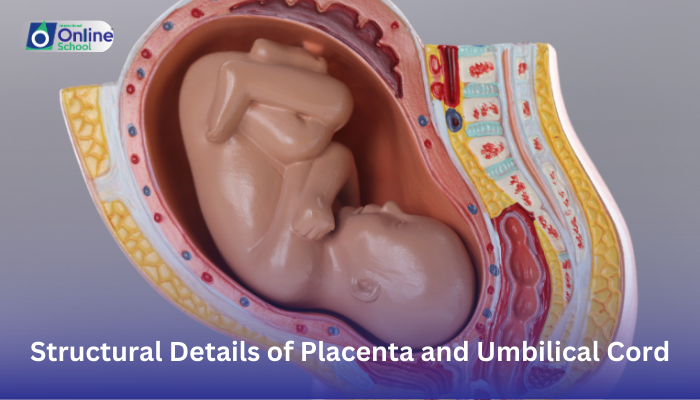
Learning Outcomes:
i. Describe the location and structure of the placenta in the uterus.
ii. Differentiate between the maternal and fetal parts of the placenta.
iii. Explain the role of the villi in nutrient and waste exchange between the mother and fetus.
iv. Understand the structure and function of the umbilical cord as the vital link between the placenta and fetus.
Introduction:
Imagine a bustling marketplace where essential goods are exchanged, ensuring the survival and growth of a thriving city. In the world of pregnancy, the placenta and umbilical cord play this crucial role, connecting the mother and fetus in a remarkable exchange of nutrients and waste. In this lesson, we'll delve into the structural details of these vital structures, appreciating the intricate design and efficient operation of this life-sustaining system.
i. The Placenta: A City of Nourishment
Location and Size: Nestled within the uterus, the placenta is a flattened, disc-shaped organ attached to the uterine wall. At term, it's about the size of a dinner plate, with a thickness of roughly 2.5 cm.
Maternal and Fetal Sides: The placenta consists of two main parts:
Maternal portion: Formed from the uterine lining, it provides blood vessels and nutrients for the fetus.
Fetal portion: Developed from the developing baby's chorion, it contains blood vessels that receive oxygen and nutrients and carry away waste products.
The Villi: Tiny Traders of Life: Branching out from the fetal portion are finger-like projections called villi. These villi increase the surface area for exchange, allowing nutrients like glucose and oxygen to diffuse from the mother's blood into the fetal blood, while waste products like carbon dioxide move in the opposite direction.
ii. The Umbilical Cord: The Lifeline Pathway
A Twisting Tunnel: The umbilical cord is a sturdy, rope-like structure connecting the placenta to the baby's navel. It's about 50-60 cm long and contains three main components:
Umbilical vein: Carries oxygen and nutrient-rich blood from the placenta to the fetus.
Two umbilical arteries: Transport waste-laden blood from the fetus back to the placenta for disposal.
Wharton's jelly: A protective gel that surrounds and cushions the blood vessels.
iii. A Symphony of Exchange: The Crucial Collaboration
The placenta and umbilical cord work in perfect harmony to ensure the fetus's well-being:
Selective Exchange: The villi act as filters, allowing only essential nutrients and oxygen to pass through. Harmful substances are blocked, protecting the developing baby.
Hormone Production: The placenta also produces hormones that regulate pregnancy, suppress the mother's immune response to the fetus, and prepare her body for childbirth.
Waste Disposal: The umbilical cord efficiently carries away waste products from the fetus, preventing their buildup and ensuring healthy development.
The placenta and umbilical cord are not just passive structures; they are the architects of a vital exchange system, the lifeline that nourishes and sustains a developing life. Understanding their structure and function allows us to appreciate the incredible complexity and efficiency of nature's design in ensuring the miracle of pregnancy unfolds smoothly. Each tiny villus, each twist of the umbilical cord, plays a critical role in this grand symphony of life, a testament to the power and wonder of human development.